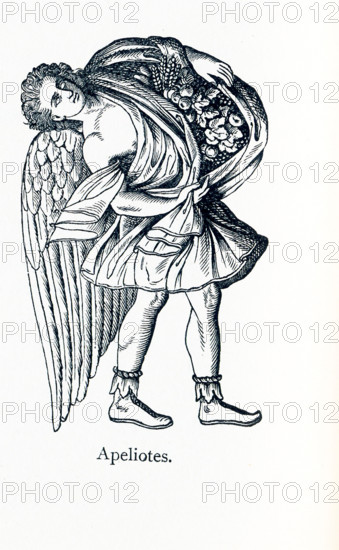
Légende
The figure pictured here, according to Greek mythology, is Apeliotes, god of the southeast wind, which was associated with good rain. Thus in art he was shown carrying fruit and draped in a cloth that concealed flowers or grain. Usually he was shown holding a ship's sternpost because when the wind blew form the southwest into Athens' port harbor of Piraeus, ships could not sail. Zephyrus was the god of the west wind. Zephyrus was the gentlest of the winds and considered a harbinger of springtime. He was pictured with flowers that indicated a mild light breeze. Eurus, or Euros, was the god of the east wind. The folds of his clothes suggested heavy clouds. The Greeks honored eight wind gods. The other four were Boreas (cold north wind), Kaikias (northeast wind), Notos (south wind), and Skiron (northwest wind).
Crédit
Photo12/Universal Images Group/Ivy Close Images
Notre référence
UMG25A05_294
Licence
Droits gérés
Format disponible
46,0Mo (1,9Mo) / 26,7cm x 43,2cm / 3151 x 5100 (300dpi)